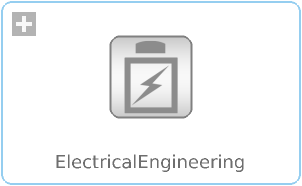WOLFRAM SYSTEM MODELER
ElectricalEngineeringPackage containing examples on electrical circuits, power electronics, and electrical machinery |
|
Package Contents
|
Example with two amplifier models with reliability parameters. Reliability analysed in the bundled Wolfram Language notebook. |
|
|
Examples with different battery discharge scenarios. |
|
|
An example with a 4-bit asynchronous counter based on JK-flip-flops. |
|
|
Model of a DC/DC boost converter used to study rise time and output current ripple |
|
|
Model of a DC/DC Buck Boost Converter used to study rise time and output current ripple |
|
|
Buck converter and Zener regulator comparison. |
|
|
Model of a DC motor that can be interacted with in real time using Mathematica. |
|
|
A model of an 8-bit digital adder built from half adders and full adders. |
|
|
Example that demonstrates robot system models based on the Manutec r3 robot |
|
|
Examples comparing different control systems for keeping a LEGO Segway upright |
|
|
Package containing example models exploring the use of potentiometers |
|
|
Rectifier that transforms and converts AC current to DC current. |
|
|
Analyze robustness of a state estimator |
|
|
Uninterruptible Power Supply components and examples. |
Information

Use System Modeler to construct and study electrical circuits, power electronics, and electrical machinery. Combine electrical and mechanical components to build complete system models. Perform analysis tasks and measure performance.
For more electrical engineering examples, see the online System Modeler examples page.
Wolfram Language

SystemModel["EducationExamples.ElectricalEngineering"]

